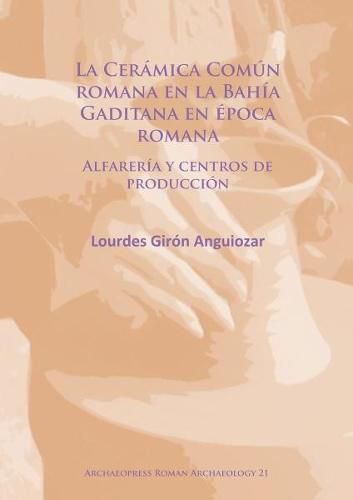Readings Newsletter
Become a Readings Member to make your shopping experience even easier.
Sign in or sign up for free!
You’re not far away from qualifying for FREE standard shipping within Australia
You’ve qualified for FREE standard shipping within Australia
The cart is loading…






This volumes examines Roman pottery and production centers in the bay of Gaditana, modern-day Cadiz. The innovative aspects of this research are several but we will limit them to three: the typological classification from a closer perspective to the mentality of the old potter; the concept of ‘social measure’, which connects the dimensions of the containers with the type of consumer and social group; and, the ethnoarchaeological aspects applied to the construction of a furnace, which have enabled to better specify various aspects relating to the manufacture of common Roman ceramics. From a methodological point of view, it is proposed a debate about the concept of ‘common pottery’, which is defined as ceramics intended for a common and multipurpose use, more practical than aesthetic. Likewise, it is exposed the great problem of the typologies, seeking not only a logical classification into types and variants, but also a reference to the artisan work. The theme of the ancient name of Roman ceramic forms is faced in order to call by the old names to the Roman pottery forms found today. The concept of ‘social measure’, unprecedented in this type of analysis, pretends to reach a social accepted measure, obtained with a statistical study. This measure is that one around which the values are concentrated.
$9.00 standard shipping within Australia
FREE standard shipping within Australia for orders over $100.00
Express & International shipping calculated at checkout
This volumes examines Roman pottery and production centers in the bay of Gaditana, modern-day Cadiz. The innovative aspects of this research are several but we will limit them to three: the typological classification from a closer perspective to the mentality of the old potter; the concept of ‘social measure’, which connects the dimensions of the containers with the type of consumer and social group; and, the ethnoarchaeological aspects applied to the construction of a furnace, which have enabled to better specify various aspects relating to the manufacture of common Roman ceramics. From a methodological point of view, it is proposed a debate about the concept of ‘common pottery’, which is defined as ceramics intended for a common and multipurpose use, more practical than aesthetic. Likewise, it is exposed the great problem of the typologies, seeking not only a logical classification into types and variants, but also a reference to the artisan work. The theme of the ancient name of Roman ceramic forms is faced in order to call by the old names to the Roman pottery forms found today. The concept of ‘social measure’, unprecedented in this type of analysis, pretends to reach a social accepted measure, obtained with a statistical study. This measure is that one around which the values are concentrated.